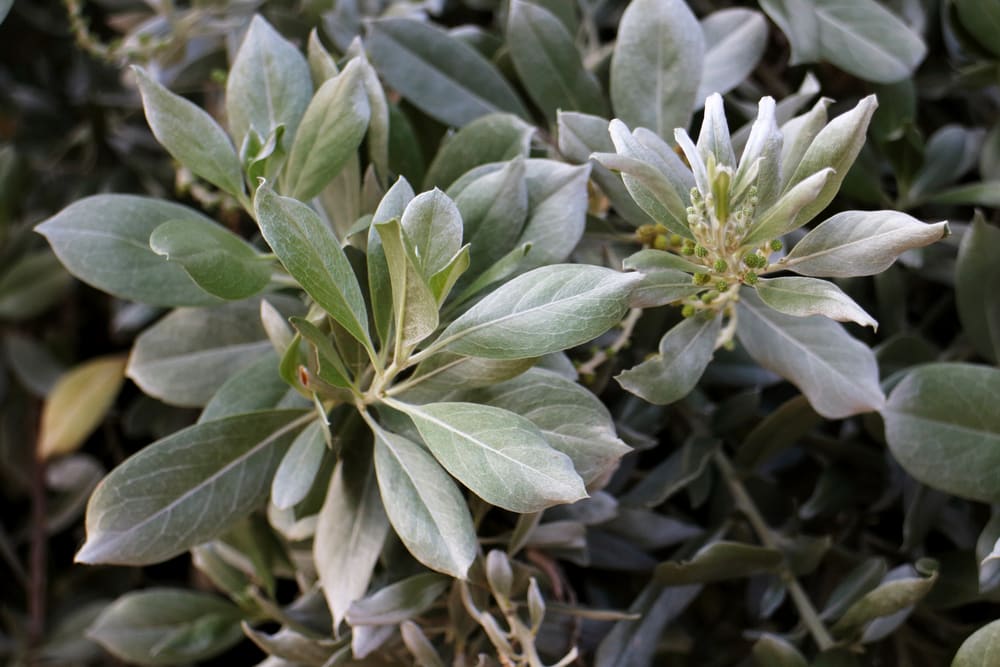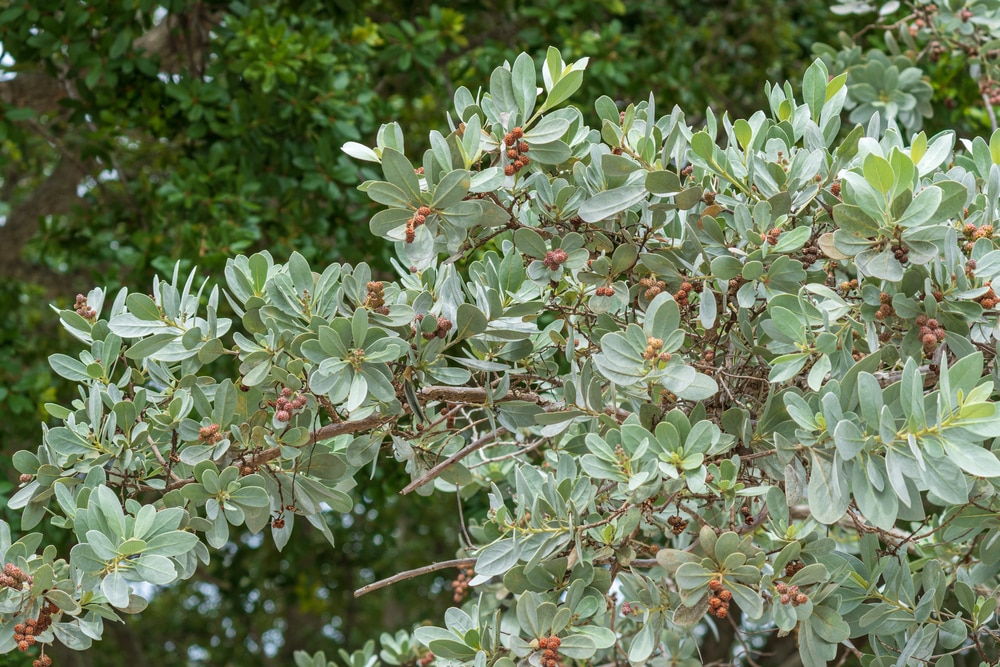Resistant to flood, drought, and salt, this evergreen is a versatile choice for the landscape to grace your home that will surely make a statement. Also known as Conocarpus erectus, buttonwood is a member of the Combretaceae family and also has the name Buttonwood Mangrove.
The Silver Buttonwood is native to Florida and it can grow as a large shrub or a tree reaching heights of 120 to 240 inches with a spread of 180 to 240 inches. This low-branching tree is famous for its unusual foliage that has a silvery sheen.

| Botanical Name | Conocarpus erectus var. sericeus |
| Common Name | Silver Buttonwood, Button Mangrove |
| Plant Type | Perennial |
| Flower Color | Greenish white conelike heads |
| Size When Mature | 240 Inches |
| Bloom Time | Spring |
| Sun Requirements | Full Sun to Partial Shade |
| USDA Hardiness Zones | 10-11 |
| Soil PH Range | 6.1-7.3 |
| Soil Type | Acidic, moist, well-draining |
| Water Needs | Low To Medium |
| Native Area | Florida |
What You Need to Know About Silver Buttonwood
This tree has unique silvery foliage hence the name Silver Buttonwood. Its extraordinary color stands out beautifully against the normal green in a landscape. The leaves are small and oblong with a smooth and velvety texture. It blooms in the spring and the flowers are small, greenish-white conelike heads, and borne in clusters. They are followed by fruits that are woody and red-dark brown. The tree is dioecious meaning that there are male and female trees.
The Silver Buttonwood is an evergreen tree that can tolerate different conditions making it easy to maintain. It does not require pruning except to shape it or remove any damaged or diseased branches. While it does not pose any threat to humans, it may be toxic to dogs because of saponin which can gastrointestinal problems.
How to Care for Silver Buttonwood
Here’s everything you need to know about growing and caring for a thriving Silver Buttonwood:
Light
This tree grows best under full sun to partial shade. It can tolerate different light conditions but it will flourish in an area that receives at least six hours of sunlight per day. When grown indoors, as a houseplant, place it near a sunny window and remember to rotate it occasionally so that all sides of the plant get an ample amount of light.
Water and Soil Needs
The Silver Buttonwood is drought-tolerant once it is established but it will benefit from regular watering, especially during prolonged periods of drought. Water the tree deeply and allow the soil to dry out slightly between watering. When grown indoors, be sure to keep the soil evenly moist but not soggy. Allow the top inch of soil to dry out before watering again.
This tree can grow in different types of soil as long as it is well-drained. The ideal soil would be sandy, loamy, or clay with a neutral to acidic pH level of 6.1 to 7.3.
It can also tolerate salt which makes it a good choice for coastal areas. The best way to determine if the soil drains well is to dig a hole about one foot deep and fill it with water.
If the water drains within four hours, then the soil is suitable for planting. If the water takes longer to drain, then you will need to amend the soil with sand or organic matter to improve drainage.
Temperature Requirements
They are best suited in Zone 10 and can tolerate through 11. However, they can’t withstand the cold temperatures of Zone 9 and below. Extreme cold and frost can damage the tree seriously and stunt its growth if not eventually kill it.
Fertilizer
The best fertilizer to use on Silver Buttonwood is a high-quality granular fertilizer. You can do this trimonthly during spring, summer, and fall. Apply the fertilizer according to package directions and be sure not to overdo it as this can damage the roots.
Common Diseases
This tree may be undemanding and easy to grow but it does not mean that it cannot be susceptive to pests and diseases. Be on the lookout for aphids, sooty molds, Sri Lanka Weevil, Florida Wax Scale, and Cylindrocladium blight disease.
Aphids are small, soft-bodied insects that pierce plant tissue to suck the sap and can cause distorted leaves and sooty molds that are black or dark-colored fungi. On the other hand, the Sri Lanka Weevil larvae bore themselves on the tree and may cause extensive damage.
If your tree is infested with Florida Wax Scale it may result in stunted growth, leaf yellowing, and eventually death if left unchecked. Lastly, though not very common, cylindrocladium blight disease affects your tree by making the root and crown rot with yellowing and wilting leaves as its first symptoms.
Silver Buttonwood Propagation
Since the Silver Buttonwood is dioecious and has the male and female on separate plants, you may propagate this tree from seeds or by taking cuttings from a mature plant.
To propagate by seed fill a container with a combination of potting soil and sand or perlite with holes in the bottom for drainage. Plant the seeds on the surface and lightly cover them with soil. Water lightly and place it in an area under full sun to partial shade. They may soon be planted in the ground when they are several inches tall.
The best way to propagate is by cuttings. These should be taken during the active growing season in late summer or early fall. Look for stems that are green and semi-ripe with a woody center that will effortlessly root soon.
Cut the stem into sections that are about four to six inches long. Although not necessary, using a rooting hormone powder before planting them will encourage growth. Place the cuttings in a pot with well-drained soil and keep them moist until they have rooted.

